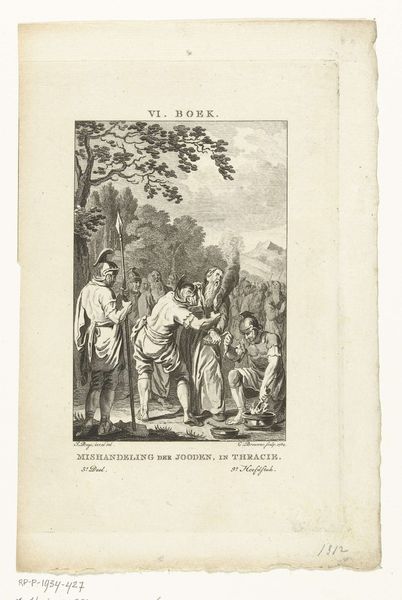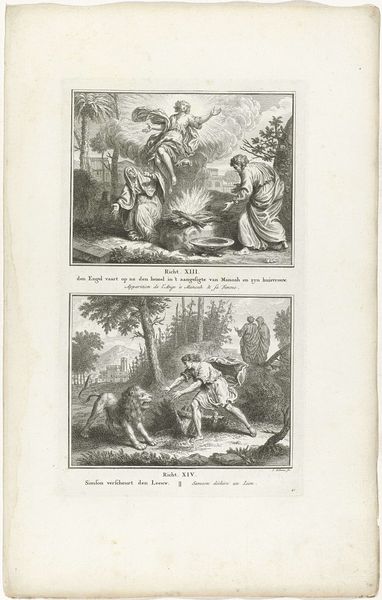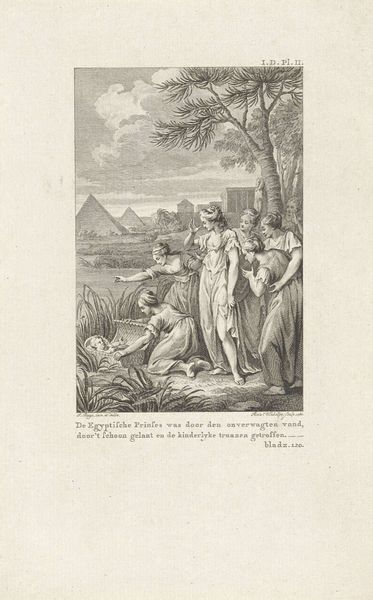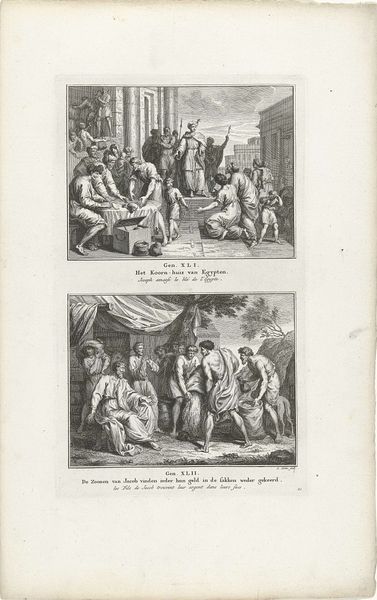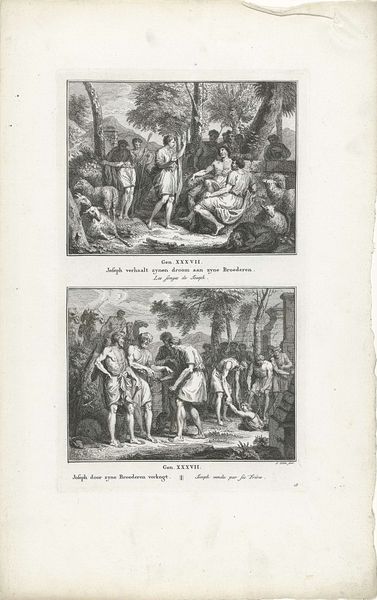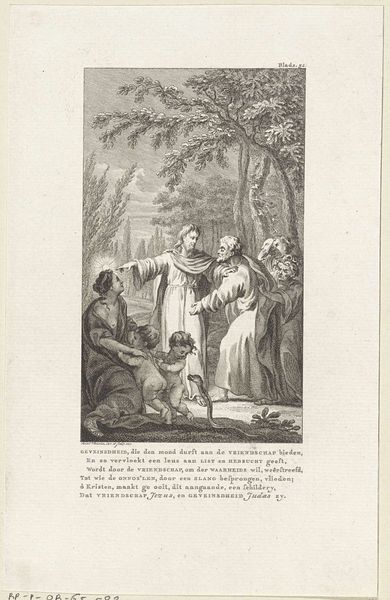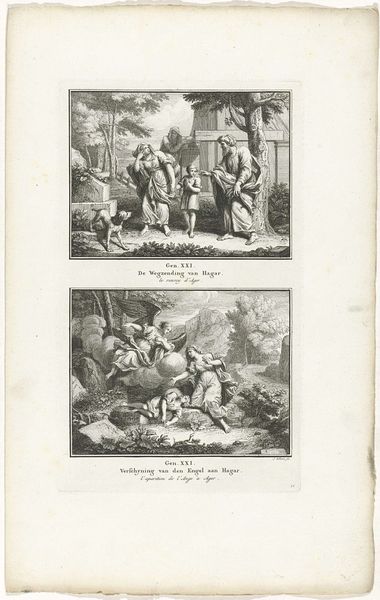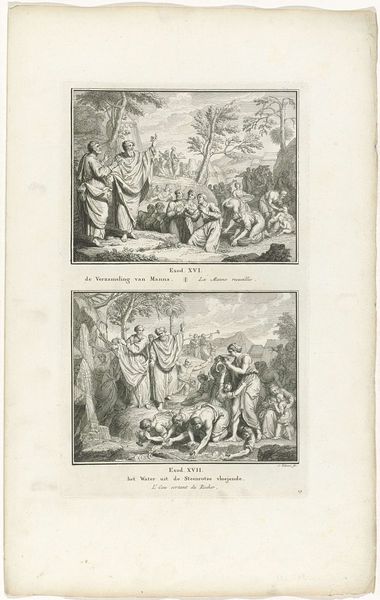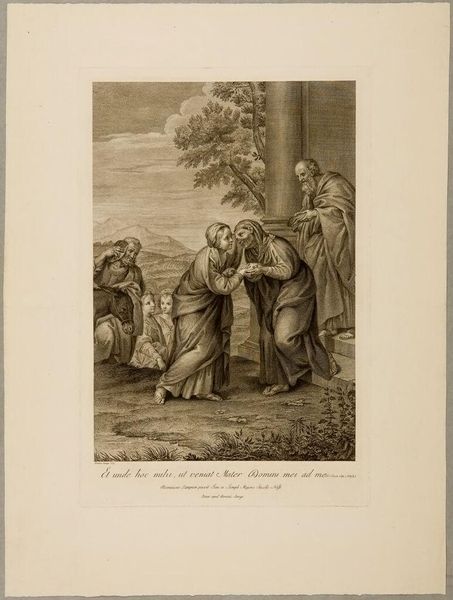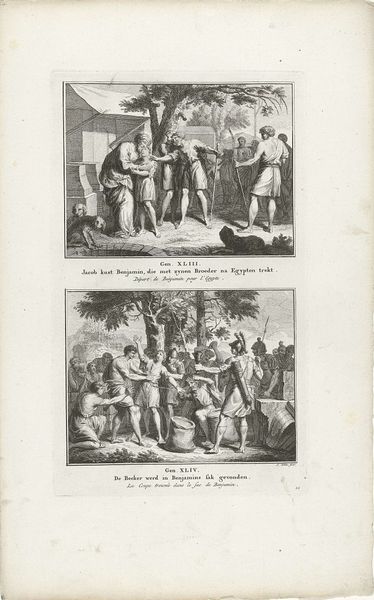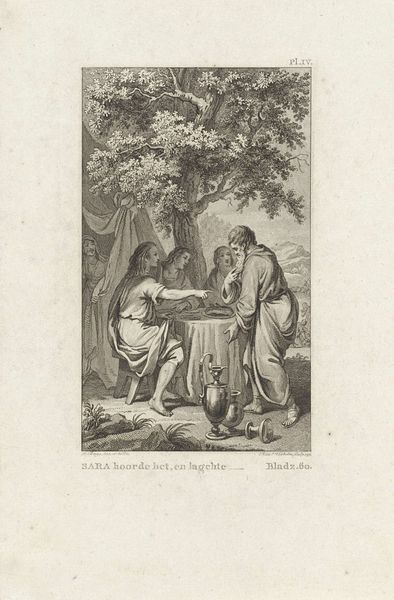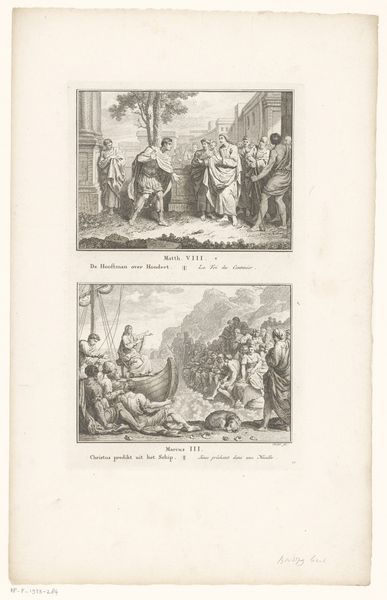
Naomi met haar schoondochters Orpa en Ruth en Ruth leest aren op het land van Boaz 1791
0:00
0:00
jacobfolkema
Rijksmuseum
Dimensions: height 326 mm, width 194 mm
Copyright: Rijks Museum: Open Domain
Editor: This is Jacob Folkema's 1791 engraving, "Naomi met haar schoondochters Orpa en Ruth en Ruth leest aren op het land van Boaz," printed on paper. The detailed lines and the composition across the two scenes is really striking, and creates a strong narrative effect. What catches your eye about this piece? Curator: I see the piece as a document of 18th-century production. Let's consider the economic reality of printmaking: the engraver’s labor, the availability of paper, and the intended market for such biblical scenes. Each line incised into the metal plate represents hours of skilled labor. And, this wouldn’t have been accessible to everyone. Who do you think these were intended to be consumed by? Editor: So, it’s not just about the religious story, but also the story of how it was made and who could afford it? Maybe wealthy merchants, or members of the clergy? Curator: Precisely. Look at the details, how the landscape and figures are rendered. It speaks to the skill involved, the social status associated with owning such an object. The paper itself, where did that come from? Who made it, and under what conditions? The chain of production is quite extensive. Editor: I hadn't really thought about the paper production and the labor that goes into the print itself, I just saw it as a scene! That adds a whole new layer to appreciating the work. Curator: Indeed. And consider the purpose: was it meant for instruction, decoration, or as a status symbol? These questions all inform our understanding. Editor: So, by examining the materials and the production process, we’re also looking at the social context and what the artwork represents in terms of labour and consumption during that period. Curator: Exactly. That is one way to understand art history through the lens of materials and making. It moves us beyond just aesthetics. Editor: Well, that's changed how I see engravings – thinking about the physical and economic elements really deepens the understanding. Thanks!
Comments
No comments
Be the first to comment and join the conversation on the ultimate creative platform.
